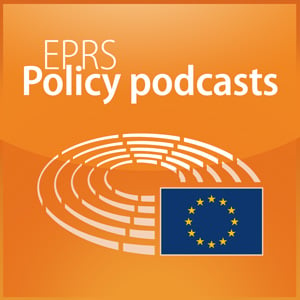The path to 6G
European Parliament - EPRS Policy podcasts
European Parliament Webmaster
4.8 • 13 Ratings
🗓️ 8 March 2024
⏱️ 7 minutes
🧾️ Download transcript
Summary
- Original publication on the EP Think Tank website
- Subscription to our RSS feed in case your have your own RSS reader
- Podcast available on Deezer, iTunes, TuneIn, Stitcher, YouTube
Source: © European Union - EP
Transcript
Click on a timestamp to play from that location
| 0:00.0 | Welcome to the European Parliamentary Research Service Podcasts. |
| 0:05.6 | The global race to 6G has begun, and the stakes are high. This new technology is poised |
| 0:13.4 | to reshape the way we interact with the digital world, but it comes with a potential host of |
| 0:18.6 | challenges, such as privacy, cybersecurity security and a high environmental footprint. |
| 0:24.6 | Let's take a peek into our digital future. |
| 0:29.6 | 3D mobile holograms, truly immersive extended reality, remote surgeries, exact digital replicas of real-world objects and people. |
| 0:40.0 | The era of 6G is coming and it promises to revolutionize the way we connect with the world |
| 0:45.2 | and with each other. But what is 6G exactly? |
| 0:50.4 | 2G allowed us to send voice and text messages for the first time. |
| 0:54.8 | With 3G came mobile internet connection. |
| 0:58.0 | High quality video streaming followed with 4G, |
| 1:01.0 | and 5G is allowing the internet of things to develop further. |
| 1:05.0 | But 6G will take our connectivity to an entirely different level, |
| 1:09.9 | creating real-time interactions that will |
| 1:12.4 | blend the limits between the physical and the digital worlds. |
| 1:15.6 | It will not only improve applications on previous mobile generations, but introduce new ones, |
| 1:21.6 | such as truly immersive extended reality, opening a world of possibilities in health and medicine, entertainment, education or manufacturing. |
| 1:30.7 | Let's take the idea of digital twins as an example. Combining the use of advanced sensors, |
| 1:36.7 | artificial intelligence and high-speed connectivity, ensuring an ultra-fast transfer of data across |
| 1:43.1 | the network. We could produce exact digital |
| 1:46.3 | copies of objects, systems, or even people in a virtual world. Now you may be thinking, |
| 1:52.7 | what's the advantage of that? Well, digital replicas could be used in medicine to build human |
... |
Please login to see the full transcript.
Disclaimer: The podcast and artwork embedded on this page are from European Parliament Webmaster, and are the property of its owner and not affiliated with or endorsed by Tapesearch.
Generated transcripts are the property of European Parliament Webmaster and are distributed freely under the Fair Use doctrine. Transcripts generated by Tapesearch are not guaranteed to be accurate.
Copyright © Tapesearch 2025.

